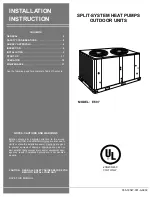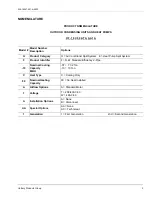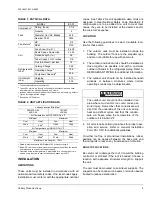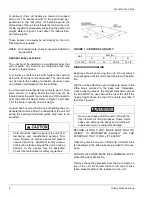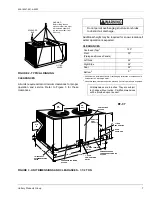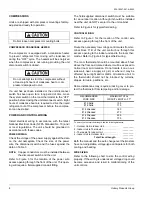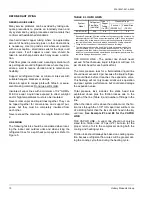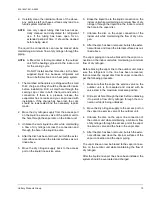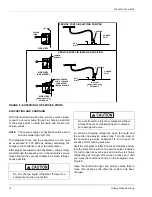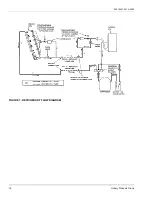
035-18547-001-A-0902
6
Unitary Products Group
A minimum of two (2) beams are required to support
each unit. The beams should: (1) Be positioned per-
pendicular to the roof joists. (2) Extend beyond the
dimensions of the unit to distribute the load on the roof,
(3) Be capable of adequately supporting the entire unit
weight. Refer to Figure 1 and Table 1 for load distribu-
tion and weights.
These beams can usually be set directly on the roof.
Flashing is not required.
NOTE:
On bonded roofs, check for special installation
requirements.
GROUND LEVEL LOCATIONS
The units must be installed on a substantial base that
will not settle. Any strain on the refrigerant lines may
cause a refrigerant leak.
A one-piece concrete slab with footers that extend
below the frost line is recommended. The slab should
not be tied to the building foundation because noise
and vibration will telegraph into the building.
A unit can also be supported by concrete piers. These
piers should: (1) extend below the frost line, (2) be
located under the unit's four corners and (3) be sized to
carry the entire unit weight. Refer to Figure 1 and Table
1 for the center of gravity and unit weight.
A gravel bed or some other means of handling the con-
densate that will drop from the underside of the unit coil
during the heating and defrost cycles may have to be
provided.
RIGGING AND HANDLING
Exercise care when moving the unit. Do not remove
any packaging until the unit is near the place of installa-
tion.
Rig the unit by attaching nylon straps with hooks to the
lifting holes provided in the base rails. Spreaders,
whose length exceeds the largest dimension across
the unit, MUST be used across the top of the unit if the
rigging height above the top of the unit is less than 5
feet. See Figure 2.
BEFORE LIFTING A UNIT, MAKE SURE THAT ITS
WEIGHT IS DISTRIBUTED EQUALLY ON THE
STRAPS SO THAT IT WILL LIFT EVENLY.
Units may also be moved or lifted with a fork-lift. Slot-
ted openings in the base rails are provided for this pur-
pose.
LENGTH OF FORKS MUST BE A MINIMUM OF 54"
when lifting from either side.
Remove the nesting brackets from the four corners on
top of the unit. All screws that are removed to take
these brackets off must be replaced on the unit.
Care should be taken to protect the unit from
tampering and unauthorized persons from
injury. Screws on access panels will prevent
casual tampering. Additional safety precau-
tions such as fences around the unit or locking
devices on the panels may be advisable.
Check local authorities for safety regulations.
FIGURE 1 - CENTER OF GRAVITY
Unit
Dim. (In.)
A
B
C
D
7-1/2 Ton
70-1/8
32
29-5/8
16-1/2
Do not use straps under the unit or through the
fork lift slots for lifting purposes. Sharp metal
edges can damage the straps and could result
in personal injury or equipment damage.

